Hey GPODers! No preamble from me today, Stephanie included a beautiful description with her submission so we’re jumping right in:
Hello! I’m Stephanie and I live in an adorable brick 1955 home in Exeter, NH. My husband and I have been restoring the property for the last five years of ownership, after years of overgrowth and sick hemlock trees. We had to remove the bulk of hemlocks in the backyard due to damage from wooly adelgid, but it created an open space that encouraged eastern bluebirds to nest, broad-winged hawks to hunt, pileated woodpeckers to forage in, and a slew of other birds such as Carolina wrens, house wrens, downy and hairy woodpeckers, yellow-bellied woodpeckers, black-throated blue grey warblers, blue-grey gnatcatchers, and many others. We also have bobcat, fox, opossum, skunk, bunny, deer, turkey, racoon, and a variety of amphibians and invertebrates. We even saw a black bear walk through the backyard last year!
It’s important to us to serve the wildlife around us, and we do that a variety of ways. One is by planting native plants in amongst other cultured favorites. Cold stratifying plants in the winter is my favorite–I get to garden in my kitchen in January, get my hands dirty and smell rich soil, and then put the seed trays out into the snow where nature does the rest. We rent mason and leaf-cutter bees from Rent Mason Bees to add more native species to our property. We also support the other native species we’ve identified, such as the green sweat bee, with wild patches of grass and flora all over the property. We don’t discourage critters from eating the garden–a nibbled garden proves a diverse and healthy habitat. We also leave lots of leaves around and in the gardens, leave the plant stems in the winter and through much of the spring and even summer, pile brush and branches in the woods, and very rarely mow or just mow small areas of the yard. We do have a tidy property where it needs to be, otherwise, it is allowed to be a bit wild and overflowing with flowers. I planted pearly everlasting (Anaphalis margaritacea, Zones 3–8) on the property specifically to host American lady caterpillars–at this time of year there are about 30+ baby caterpillars munching away at the plant, making it look rather terrible. However, once those cats turn to butterflies, the plant blooms and regrows its leaves, and the caterpillar cycle begins again until the fall. The plant has only grown in size over the years, and we’ve supported countless butterflies. We also grow a variety of milkweeds, yarrow, columbine, grasses, and asters. We’ve been lucky enough to have many native plants just show up on our land which had almost no flowers growing when we purchased it. We see pussytoes (Antennaria plantaginifolia, Zones 3–9), hawkweed (Hieracium lachenalii), fleabane, bluets (Houstonia caerulea, Zones 3–9), snakeroot (Ageratina altissima, Zones 3–8), Jack-in-the-pulpits (Arisaema triphyllum, Zones 4–9), mosses, clovers, daisies, and so many others. Instead of planting a typical grass lawn, we’ve added clover or native grass seeds that can grow as they like.
I have loved gardening since I was a child. My great Uncle Hans was a florist and had stunning gardens, simple, with plenty of wildness around the property and the most beautiful compost pile I’ve ever seen. My mother would build tunnels with trellised mini pumpkins for my siblings and I to walk through, and I looked forward to the open house at Ellison’s Greenhouses each spring where I would pick my favorite Johnny-jump-up (Viola tricolor, annual) for the garden. I love seeing violas and foxglove growing where I didn’t plant them, whether it’s on our brick steps covered in moss, in between the brick patio, or in a garden bed. I would love our yard to look and feel like an ‘English garden’–full of thick beds of flowers, vining plants trellised along the house, and edible plants throughout.
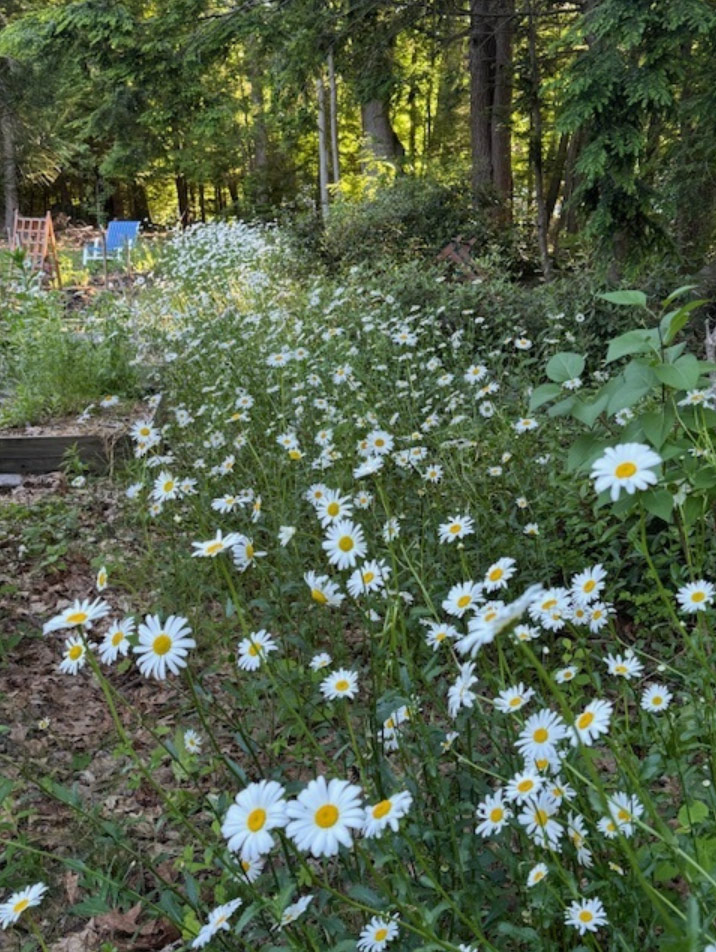 Wild daisies that planted themselves–lucky me!
Wild daisies that planted themselves–lucky me!
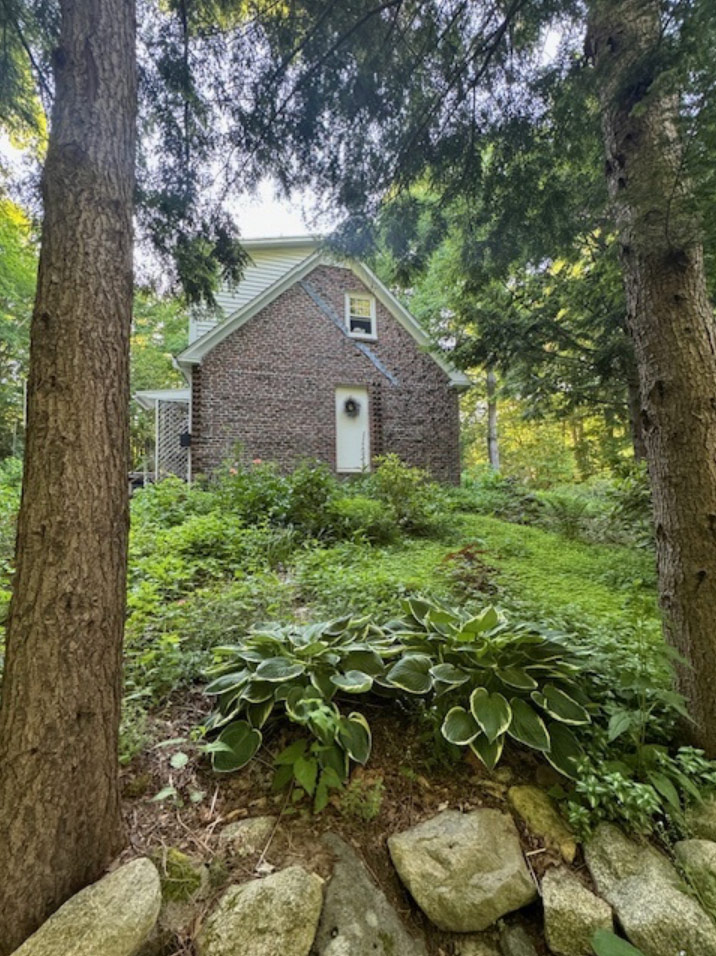 Hosta and a sea of green sweet woodruff (Galium odoratum, Zones 4–9)
Hosta and a sea of green sweet woodruff (Galium odoratum, Zones 4–9)
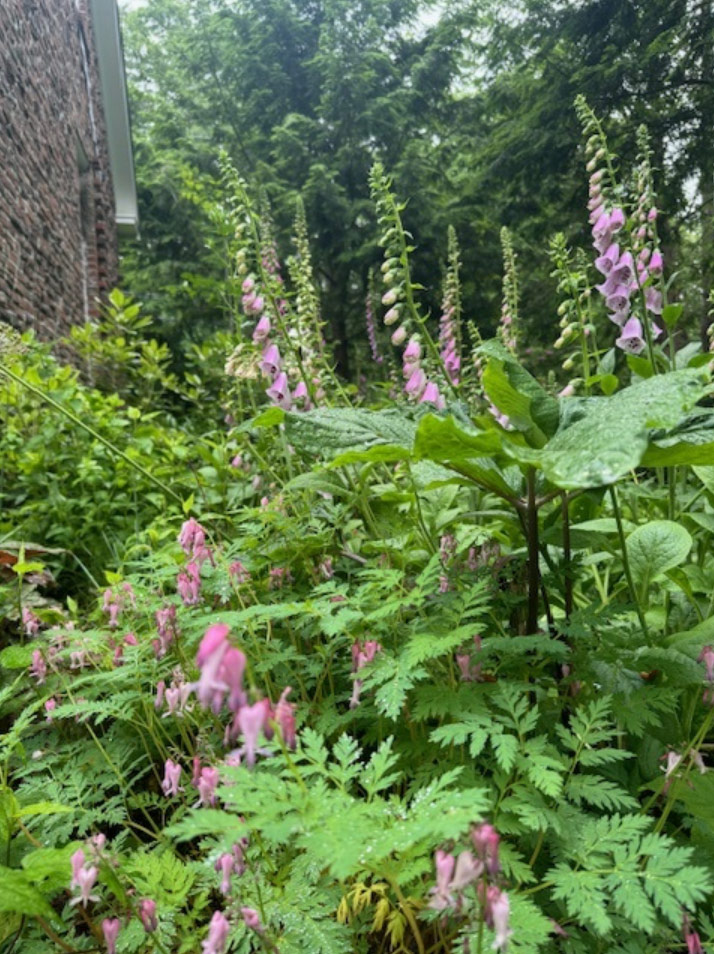 Bleeding hearts, Jack-in-the-pulpit, and foxglove.
Bleeding hearts, Jack-in-the-pulpit, and foxglove.
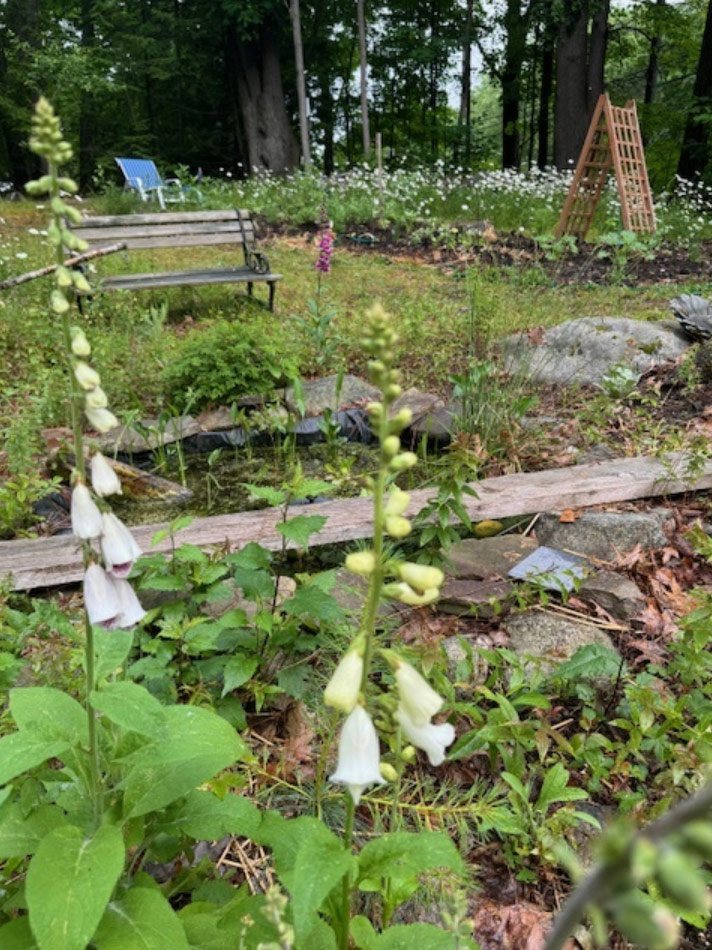 A homemade pond for wild frogs, painted turtles, and any critter to enjoy. Foxglove and aster in the foreground.
A homemade pond for wild frogs, painted turtles, and any critter to enjoy. Foxglove and aster in the foreground.
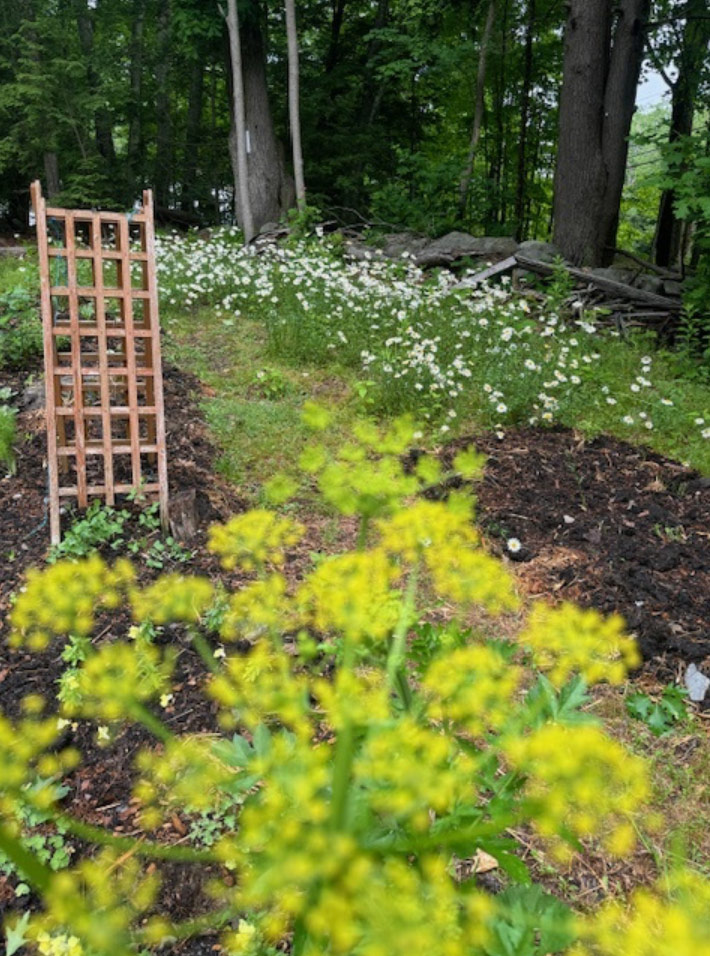 We’ve left parsnip in the garden and allowed it to bloom as it is a favorite of swallow tail butterflies (foreground) and have started some garden beds around the wild daisies.
We’ve left parsnip in the garden and allowed it to bloom as it is a favorite of swallow tail butterflies (foreground) and have started some garden beds around the wild daisies.
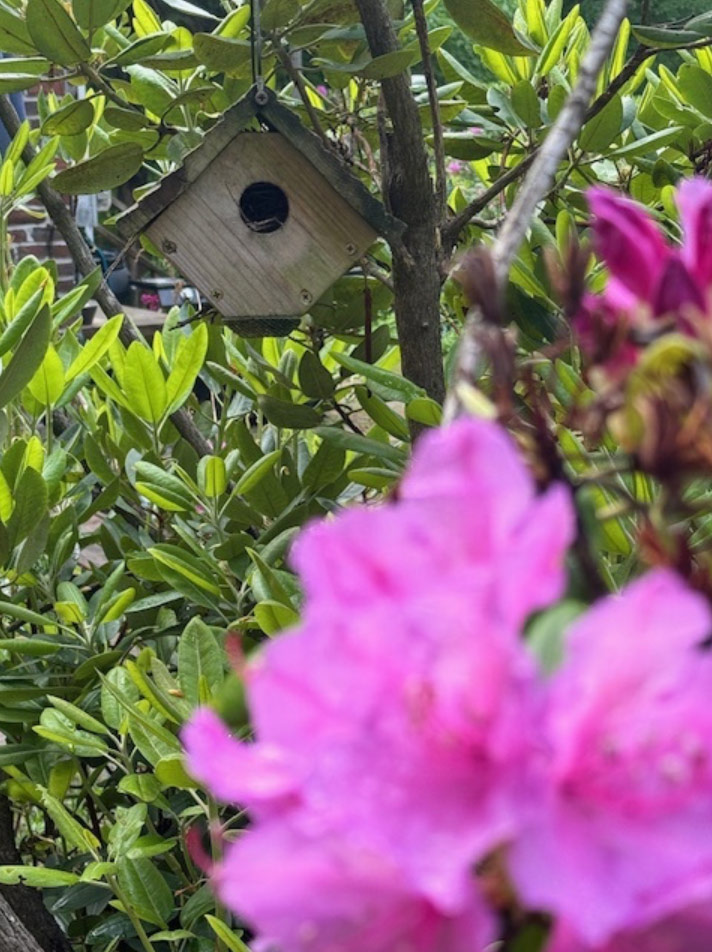 Don’t make the mistake of posting a wren house below your bedroom window–they start their mornings very early, and despite their small size, are the loudest, most verbose singers!
Don’t make the mistake of posting a wren house below your bedroom window–they start their mornings very early, and despite their small size, are the loudest, most verbose singers!
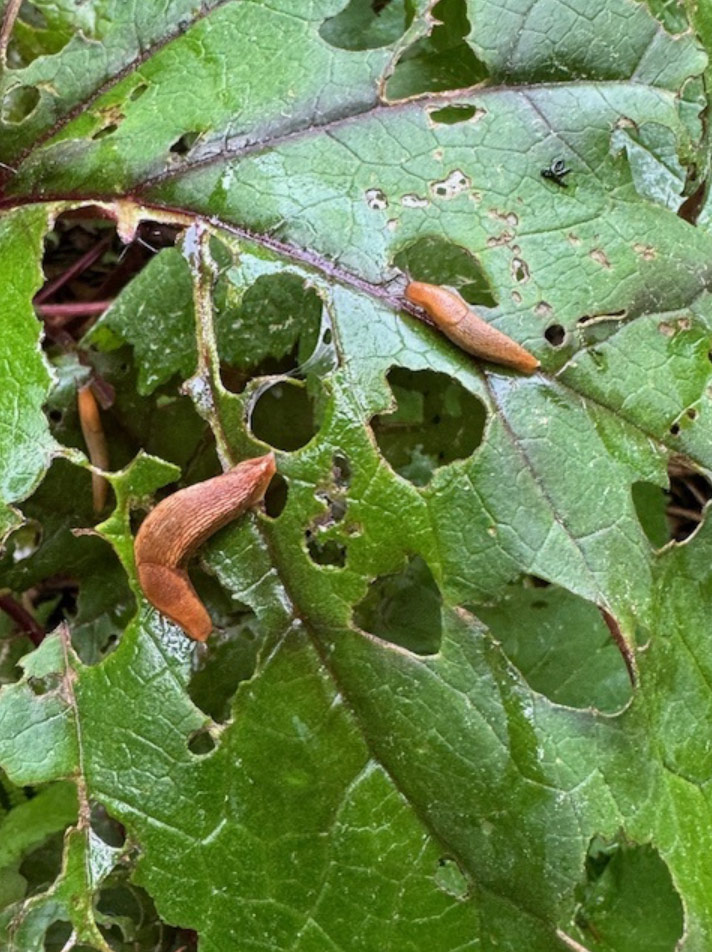 The leopard plant (Farfugium japonicum, Zones 7–10) is a slug favorite! Happy to share! The plant does just fine despite the activity, and blooms every other year.
The leopard plant (Farfugium japonicum, Zones 7–10) is a slug favorite! Happy to share! The plant does just fine despite the activity, and blooms every other year.
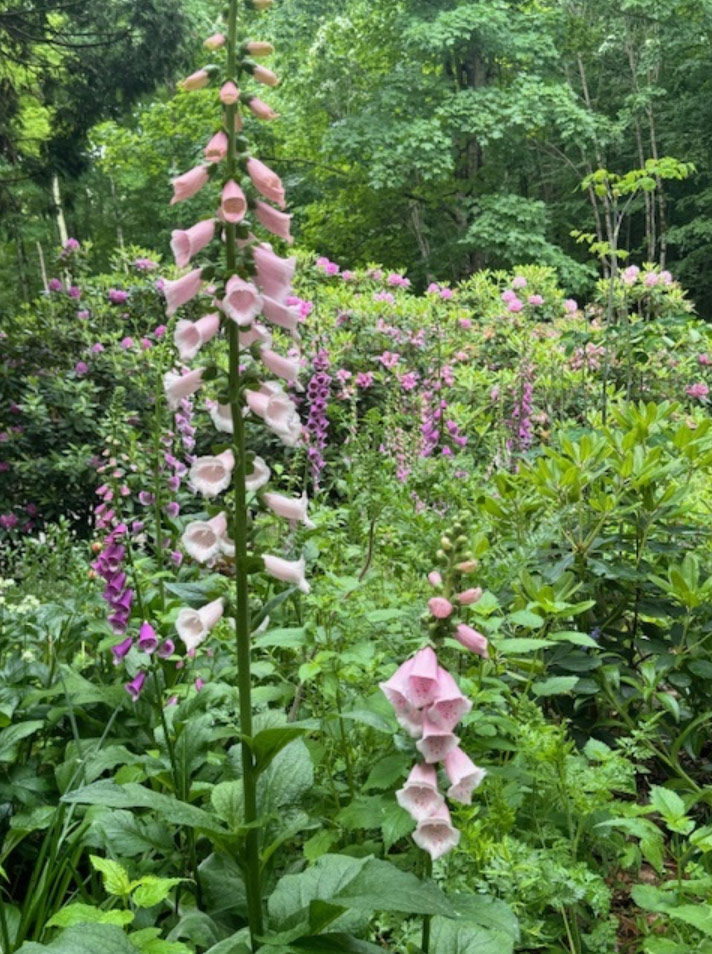 Foxglove, wild carrot (Daucus carota) (lower right), rhododendron, meadow rue (tall on the right), wild aster.
Foxglove, wild carrot (Daucus carota) (lower right), rhododendron, meadow rue (tall on the right), wild aster.
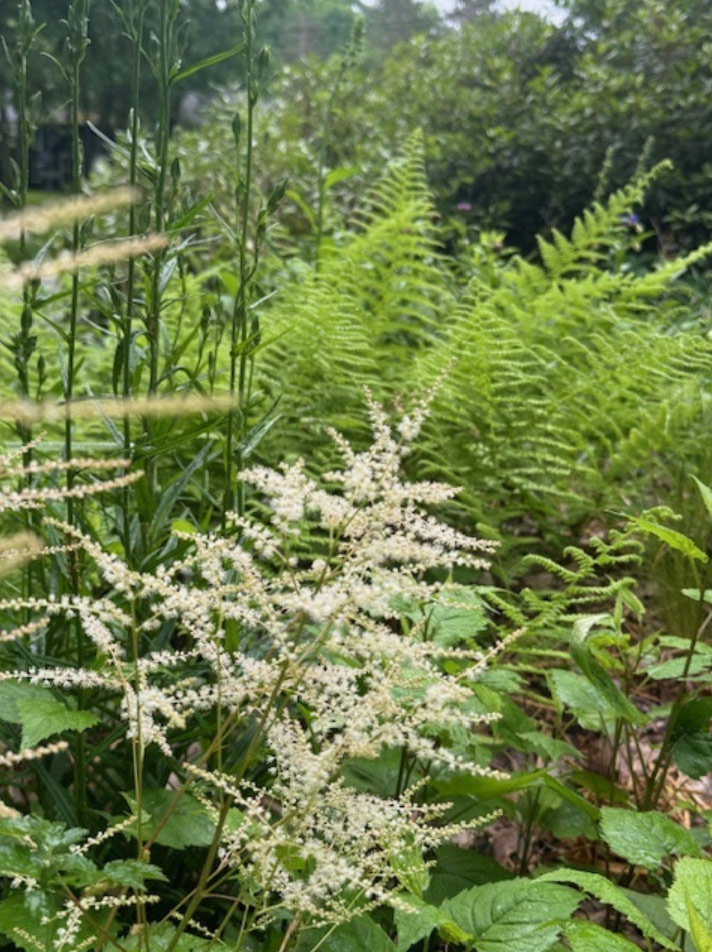 Goatsbeard (Aruncus dioicus, Zones 3–8), wild aster, and fern.
Goatsbeard (Aruncus dioicus, Zones 3–8), wild aster, and fern.
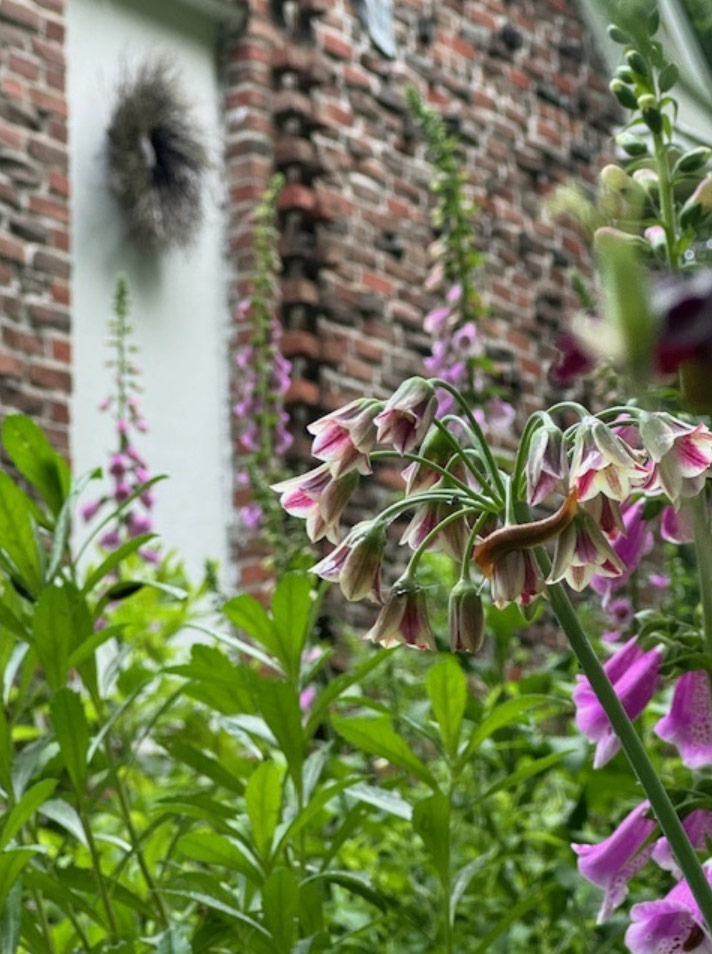 Foxglove, Sicilian honey garlic (Nectaroscordum siculum, Zones 5–10) (formerly Allium bulgaricum), and a brown slug.
Foxglove, Sicilian honey garlic (Nectaroscordum siculum, Zones 5–10) (formerly Allium bulgaricum), and a brown slug.
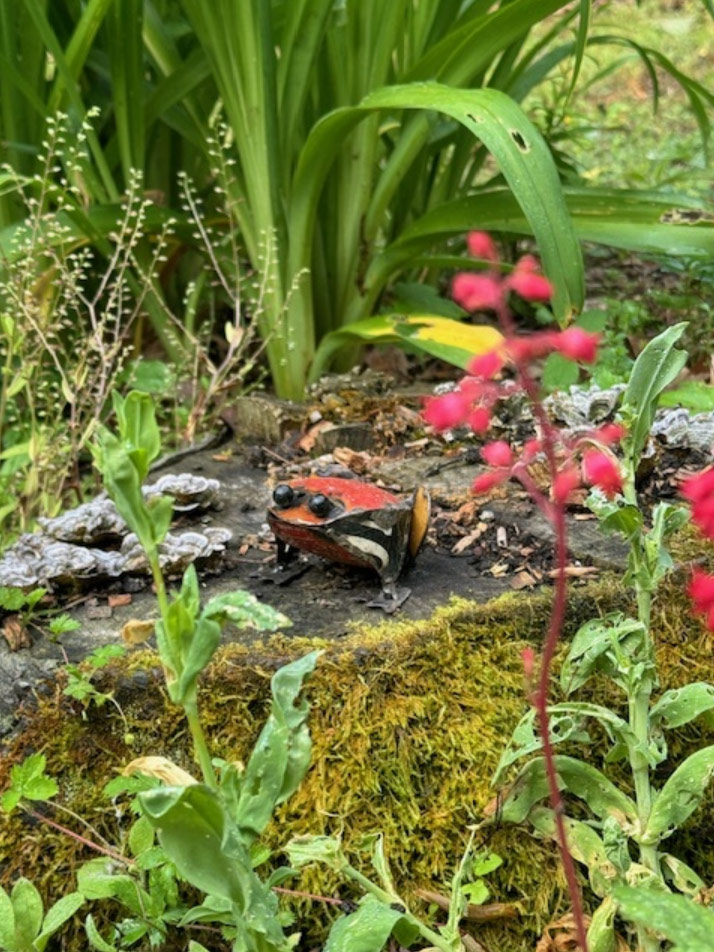 Heuchera(coral bells) with the red flower, moss and turkey tail fungus on the stump, spent forget-me-nots (Myosotis sylvatica, Zones 5–9) in the back, left, daylilies in the background.
Heuchera(coral bells) with the red flower, moss and turkey tail fungus on the stump, spent forget-me-nots (Myosotis sylvatica, Zones 5–9) in the back, left, daylilies in the background.
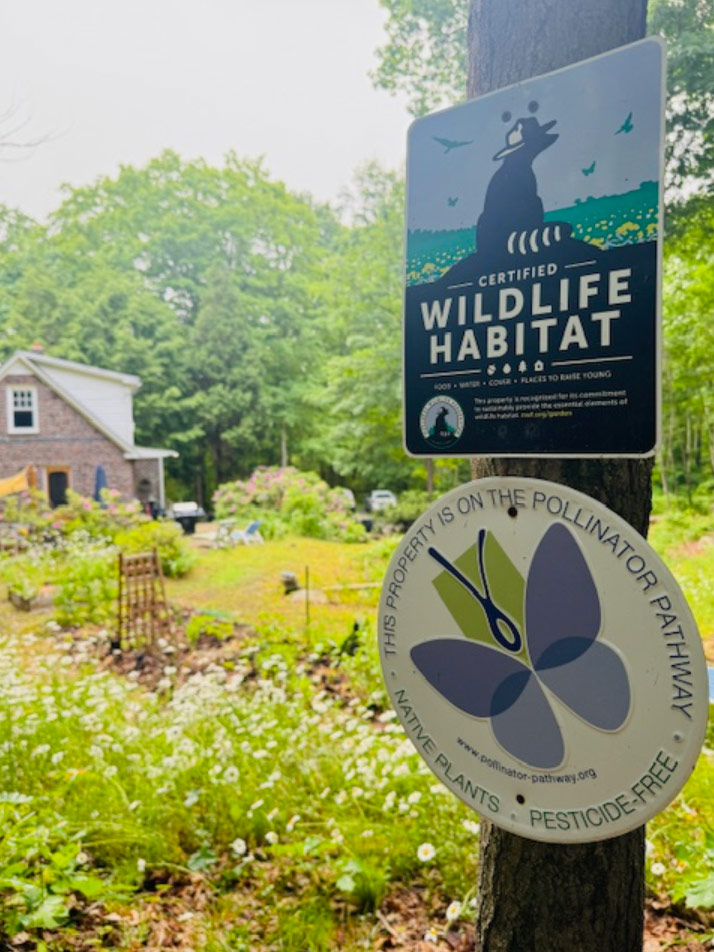 I don’t think any of us need these signs to know that Stephanie is a steward for all the living things that visit her garden. What a magical place to take in the wonder of nature. Thank you for sharing your haven for wildlife with us, Stephanie!
I don’t think any of us need these signs to know that Stephanie is a steward for all the living things that visit her garden. What a magical place to take in the wonder of nature. Thank you for sharing your haven for wildlife with us, Stephanie!
Have a garden you’d like to share?
Have photos to share? We’d love to see your garden, a particular collection of plants you love, or a wonderful garden you had the chance to visit!
To submit, send 5-10 photos to [email protected] along with some information about the plants in the pictures and where you took the photos. We’d love to hear where you are located, how long you’ve been gardening, successes you are proud of, failures you learned from, hopes for the future, favorite plants, or funny stories from your garden.
Have a mobile phone? Tag your photos on Facebook, Instagram or Twitter with #FineGardening!
Do you receive the GPOD by email yet? Sign up here.
